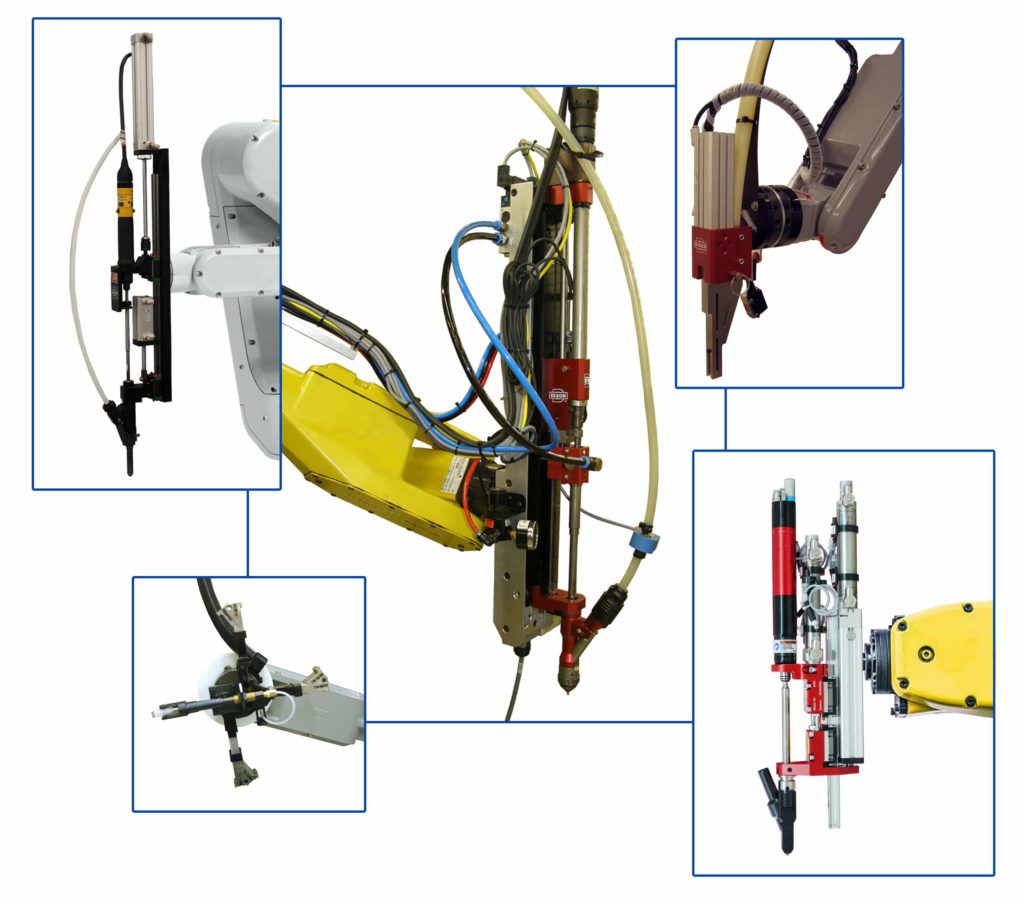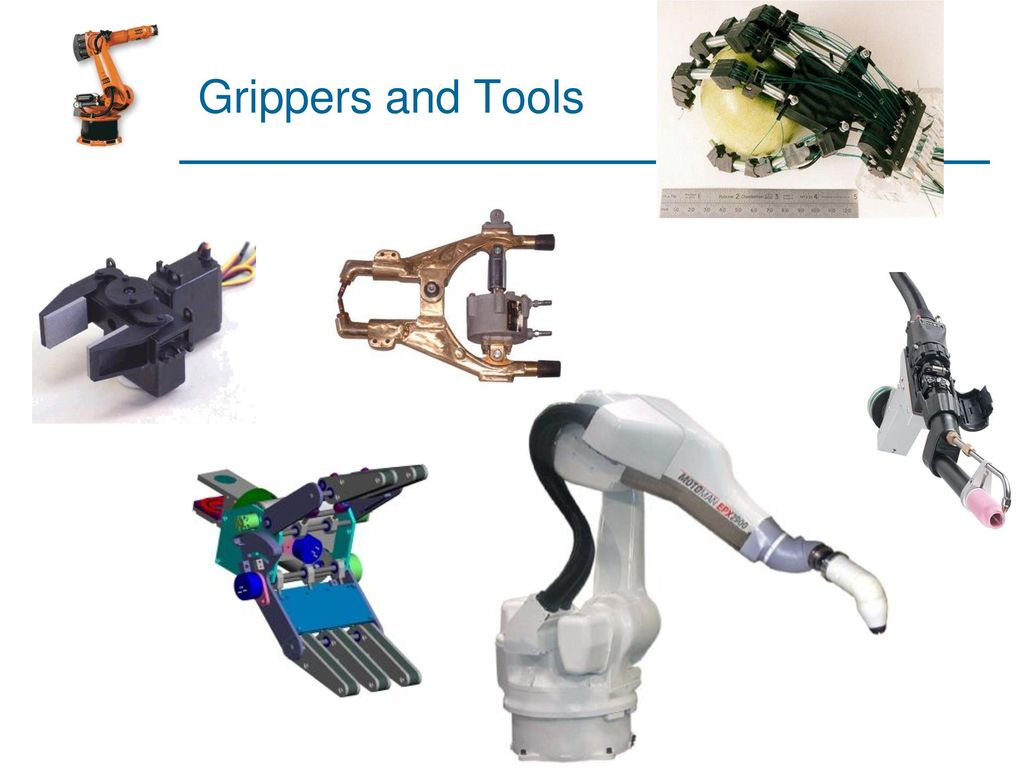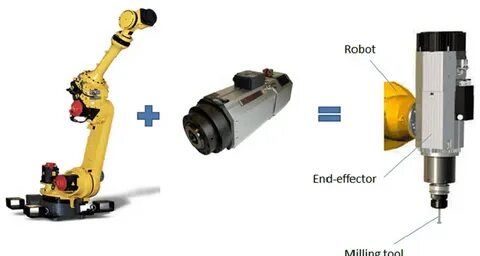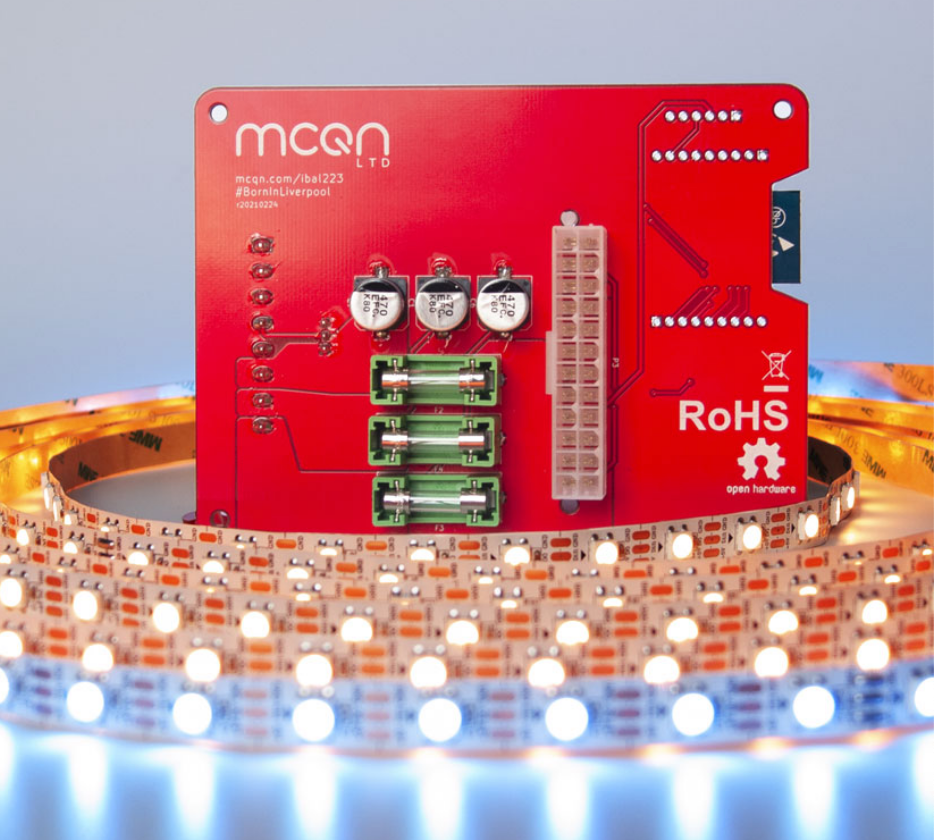Within the quickly evolving area of robotics, understanding robotic finish effectors is essential for maximizing automation processes. Finish effectors are the units hooked up to the top of a robotic arm, permitting it to work together with the atmosphere.
These parts play a pivotal function in numerous industrial functions, making the selection of the fitting finish effector important for enhancing productiveness and effectivity in automation. This text delves into the several types of finish effectors, elements to think about when choosing one, and the combination of sensors in robotic programs.
What Are the Completely different Kinds of Finish Effectors in Robotics?

Overview of Frequent Finish Effector Sorts
Finish effectors in robotics will be categorised into a number of varieties, every designed for particular duties. The commonest forms of finish effectors embody grippers, suction cups, magnetic grippers, and welding finish effectors. Grippers are maybe essentially the most well known sort of finish effector, used to know and maintain objects.
They are often mechanical, utilizing fingers or claws to grip, or pneumatic, using air strain to create a gripping drive. Suction cups, alternatively, make use of vacuum know-how to raise and manipulate flat or easy objects, making them best for dealing with supplies like glass or sheet steel.
Magnetic grippers are specialised for ferromagnetic supplies, offering a stronghold throughout motion. Every sort of finish effector is tailor-made to fulfill the calls for of numerous industrial processes, showcasing the flexibility of robotic know-how.
Comparability of Grippers and Different Finish Effectors
When evaluating grippers to different finish effectors, it’s important to think about their operational mechanisms and functions. Grippers are basically designed to know and manipulate objects, making them indispensable in manufacturing environments the place components have to be picked, positioned, or assembled.
In distinction, different finish effectors, akin to welding finish effectors, are particularly engineered to carry out duties like becoming a member of supplies collectively. This differentiation highlights the necessity for producers to know the distinctive functionalities of assorted finish effectors when designing automation programs.
Moreover, robotic drive compliance finish effectors are gaining traction, permitting robots to adapt their grip based mostly on the form and weight of the item, additional enhancing their utility in advanced duties.
Purposes of Varied Finish Effector Sorts
The functions of several types of finish effectors are huge and assorted, spanning a number of industries. Within the automotive sector, for instance, robotic grippers are employed in meeting traces to effectively deal with parts through the manufacturing course of.
Suction cups are generally utilized in packaging industries, facilitating the graceful switch of merchandise from one conveyor to a different. Within the electronics business, magnetic grippers will be utilized for assembling small, delicate components with out inflicting injury.
General, the selection of finish effector considerably influences the effectivity and effectiveness of automation, underscoring the significance of choosing the fitting finish effector for particular duties.
Select the Proper Finish Effector for Your Enterprise?

Components to Take into account When Deciding on an Finish Effector
Selecting the best finish effector for your small business includes cautious consideration of a number of elements. In the beginning, the character of the objects being dealt with performs a important function; weight, measurement, and materials properties should all be assessed.
As an example, if the duty includes dealing with fragile objects, a robotic gripper with tender fingers or a suction cup may be extra acceptable.
One other important issue is the velocity and precision required for the duty at hand. Some functions demand fast, repetitive motions, whereas others could require delicate dealing with and precise placement.
Moreover, environmental circumstances, akin to temperature and humidity, may also affect the choice course of, as sure finish effectors could also be extra suited to face up to harsh environments.
Matching Finish Effectors to Particular Duties
When choosing an finish effector, it’s essential to match its capabilities to the particular duties it’s going to carry out. For instance, in an meeting line the place precision is paramount, robotic grippers outfitted with sensors to detect object alignment might considerably improve operational effectivity.
Then again, if the duty includes transferring heavy supplies, pneumatic grippers identified for his or her power and reliability may be the most suitable choice.
Moreover, companies ought to take into account the flexibility of the top effector; a customized finish effector designed for a number of features can present vital benefits over single-purpose instruments, permitting for larger flexibility in operations.
Value vs. Performance: Making the Proper Selection
Within the realm of automation, balancing price and performance is a important side of selecting the best finish effector. Whereas high-end robotic grippers and superior pneumatic programs provide superior efficiency, in addition they include the next price ticket.
Companies should consider their particular wants and funds constraints to make knowledgeable choices. A radical cost-benefit evaluation will help organizations perceive the long-term worth of investing in additional superior know-how versus choosing extra economical options.
Finally, choosing the fitting finish effector includes contemplating each the fast necessities and future scalability of operations.
What Function Do Sensors Play in Robotic Finish Effectors?
Kinds of Sensors Utilized in Robotic Finish Effector Design
Sensors play an integral function in enhancing the performance of robotic finish effectors. Varied forms of sensors are utilized in finish effector design, together with drive sensors, proximity sensors, and imaginative and prescient programs.
Pressure sensors are essential for guaranteeing that the robotic applies the suitable quantity of grip for various objects, stopping injury whereas sustaining effectivity. Proximity sensors assist the robotic arm to detect the presence of objects, enabling it to regulate its motion accordingly.
Imaginative and prescient programs, usually built-in with cameras, permit robots to establish and find objects, enhancing their capacity to carry out advanced duties autonomously.
How Sensors Improve the Performance of Finish Effectors
The mixing of sensors into finish effectors considerably enhances their performance, resulting in extra environment friendly and exact robotic operations.
As an example, with using robotic drive compliance finish effectors, robots can modify their grip based mostly on real-time suggestions from drive sensors. This functionality is very helpful in meeting duties the place the robotic should deal with parts with various levels of fragility.
Moreover, the information collected from sensors can be utilized to enhance the general effectivity of the automation course of. By analyzing sensor suggestions, companies can fine-tune their robotic programs for optimum efficiency and productiveness.
Examples of Sensor Integration in Robotic Programs
Quite a few examples illustrate the profitable integration of sensors in robotic programs. In automated warehouses, robotic arms outfitted with imaginative and prescient programs can navigate and retrieve objects from cabinets with outstanding precision.
Pressure sensors permit these robots to deal with fragile merchandise with out inflicting injury. In manufacturing environments, sensors are used to watch the situation of the top effectors, guaranteeing they continue to be in optimum working situation and alerting operators when upkeep is required.
These examples underline the significance of sensor know-how in advancing the capabilities of robotic finish effectors and enhancing general automation effectivity.
What Are the Purposes of Robotic Grippers in Automation?

Industrial Purposes of Robotic Grippers
Robotic grippers have discovered intensive functions throughout numerous industries, primarily as a result of their versatility and effectivity. In automotive manufacturing, grippers are used for assembling parts and transferring components alongside the manufacturing line.
They facilitate high-speed operations whereas guaranteeing accuracy and repeatability. Within the meals and beverage business, robotic grippers are employed to select and place objects in packaging processes, enhancing hygiene and velocity.
Moreover, in electronics manufacturing, specialised robotic grippers deal with delicate parts, stopping injury throughout meeting and testing processes. The widespread use of robotic grippers signifies their significance in fashionable automation.
Benefits of Utilizing Grippers in Automated Processes
The benefits of utilizing robotic grippers in automated processes are manifold. Firstly, they considerably enhance the velocity and effectivity of operations, decreasing cycle occasions and enhancing throughput.
Secondly, robotic grippers improve precision, guaranteeing that duties are carried out precisely with minimal errors. This not solely boosts productiveness but additionally results in larger high quality output. Moreover, using robotic grippers reduces labor prices, as fewer human operators are required to carry out repetitive and strenuous duties.
Furthermore, the security of the work atmosphere is improved, as robots take over doubtlessly hazardous duties, permitting human employees to concentrate on extra advanced and strategic actions.
Future Traits in Gripper Know-how and Automation
The way forward for gripper know-how and automation is poised for vital developments. With the rise of synthetic intelligence and machine studying, we are able to anticipate to see smarter robotic grippers able to studying from their atmosphere and adapting to altering circumstances.
Improvements akin to tender robotics could result in the event of grippers that may deal with a wider vary of objects with various styles and sizes. Moreover, the combination of superior sensors will improve the responsiveness and adaptableness of robotic programs, permitting them to carry out advanced duties with larger ease.
As automation continues to evolve, the function of robotic grippers will undoubtedly broaden, driving additional developments in effectivity and productiveness throughout numerous industries.
How Do Mechanical and Pneumatic Grippers Differ?

Understanding Mechanical Grippers: Design and Perform
Mechanical grippers are one of the vital conventional forms of finish effectors utilized in robotics. They function utilizing a system of gears and motors to open and shut their fingers, permitting them to know objects securely.
Mechanical grippers are identified for his or her reliability and power, making them appropriate for dealing with heavy or inflexible objects. Their design can range, with some that includes a number of fingers for enhanced dexterity.
Nonetheless, the pliability of mechanical grippers will be restricted in comparison with different varieties, notably when dealing with delicate or irregularly formed objects.
The Advantages of Pneumatic Grippers in Robotics
Pneumatic grippers, in distinction, make the most of compressed air to generate gripping drive. This technique permits for speedy and highly effective actions, making pneumatic grippers notably efficient in high-speed automation environments.
The flexibility to regulate the grip power via air strain gives flexibility in dealing with numerous objects, from gentle to heavy. Furthermore, pneumatic grippers will be designed to have a softer contact, making them appropriate for delicate objects.
Their fast response occasions and adaptableness make them a well-liked selection in industries the place velocity and flexibility are paramount.
Selecting Between Mechanical and Pneumatic Grippers
When deciding between mechanical and pneumatic grippers, companies should take into account their particular operational wants. Mechanical grippers are perfect for functions requiring excessive power and precision, notably when dealing with heavy parts.
Then again, pneumatic grippers provide benefits in velocity and adaptability, making them appropriate for duties that require fast changes or dealing with of numerous styles and sizes.
Finally, the selection will rely on elements akin to the character of the duties, the forms of supplies being dealt with, and the general automation objectives of the enterprise.
CNC Manufacturing Processes and XMAKE as a CNC Machining Provider
CNC manufacturing processes are a cornerstone of recent manufacturing. CNC machines use pre-programmed laptop software program to regulate the motion of instruments and equipment. This enables for prime precision and repeatability within the manufacturing of components and parts. Some widespread CNC manufacturing processes embody:
- CNC Milling: This course of makes use of rotary cutters to take away materials from a workpiece. It’s used for creating advanced shapes and options akin to slots, holes, and contours.
- CNC Turning: This course of includes rotating a workpiece whereas a single-point reducing device removes materials. It’s usually used for creating cylindrical components akin to shafts and bushings.
- CNC Drilling: This course of makes use of a rotating drill bit to create holes in a workpiece. It’s usually used along side different CNC processes akin to milling and turning.
- CNC Grinding: This course of makes use of a rotating grinding wheel to take away materials and obtain a excessive floor end. It’s used for ending operations the place excessive precision is required.
XMAKE as a CNC Machining Provider
XMAKE is a number one provider of CNC machining companies. The corporate gives a spread of benefits that make it a most well-liked selection for a lot of companies:
- Excessive Precision and High quality: XMAKE makes use of state-of-the-art CNC machines and employs extremely expert technicians to make sure that each half is manufactured to the best requirements of precision and high quality.
- Versatility: XMAKE gives a variety of CNC machining companies, together with milling, turning, drilling, and grinding. This makes it a one-stop store for all of your CNC machining wants.
- Customization: XMAKE works intently with purchasers to know their particular necessities and supply custom-made options. Whether or not you want a prototype or a big manufacturing run, XMAKE can ship.
- Quick Turnaround Instances: XMAKE understands the significance of well timed supply. The corporate has streamlined its processes to make sure that orders are accomplished and delivered as rapidly as doable.
- Aggressive Pricing: Regardless of providing high-quality companies, XMAKE maintains aggressive pricing. The corporate works to offer cost-effective options with out compromising on high quality.
- Buyer Help: XMAKE prides itself on glorious buyer help. The corporate gives technical help and steerage all through the whole course of, from design to supply.
Conclusion
Robotic finish effectors are a vital part of recent automation programs, enabling robots to carry out a variety of duties with excessive precision and effectivity. By understanding the several types of finish effectors and their functions, companies could make knowledgeable choices that improve their automation processes.
Whether or not it’s a gripper for materials dealing with, a welding torch for manufacturing, or a specialised finish effector for medical functions, the fitting selection can considerably have an effect on operational effectivity and productiveness.
Furthermore, CNC manufacturing processes play an important function in producing high-precision components and parts. Firms like XMAKE are important companions within the manufacturing business with their excessive precision, versatility, customization choices, quick turnaround occasions, aggressive pricing, and glorious buyer help.
By leveraging the fitting finish effectors and CNC machining companies, companies can keep aggressive in as we speak’s fast-paced industrial panorama.
FAQs
1. What’s the commonest sort of finish effector?
2. What are the classifications of finish effectors?
Reference
The publish Understanding Robotic Finish Effectors: Sorts, Purposes, and Automation Insights appeared first on XMAKE | Customized Components On-Demand Manufacturing.



